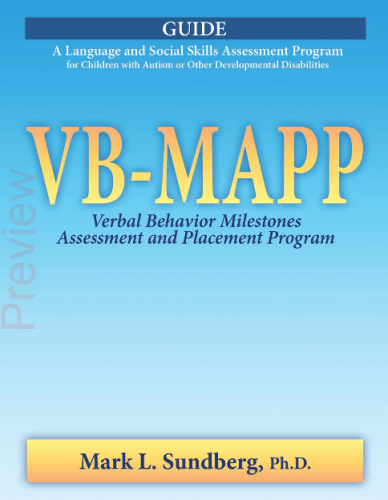
Hey friend! In this article, we’ll be discussing VB-MAPP, which stands for Verbal Behavior Milestones Assessment and Placement Program. If you’re looking for a free VB-MAPP PDF download, you’ve come to the right place. We’ll explore what VB-MAPP is, why it’s important, and where you can find a PDF download for free. So, let’s get started!
The VB-MAPP Assessment: A Revolutionary Tool for Behavior Analysis
If you’re someone who works in the field of behavior analysis, you’ve likely heard about the VB-MAPP assessment. It’s an important tool that’s helping professionals better assess and understand the behavior of individuals with Autism Spectrum Disorder (ASD) and other developmental disabilities.
But what exactly is the VB-MAPP, and how does it work? In this article, we’ll dive into the details of this revolutionary assessment, providing you with the information you need to better understand its capabilities.
What is the VB-MAPP Assessment?
The VB-MAPP assessment, which stands for Verbal Behavior Milestones Assessment and Placement Program, is a standardized assessment tool used to measure the language and learning abilities of individuals with ASD and other developmental disabilities.
Developed by Dr. Mark Sundberg, a Board Certified Behavior Analyst (BCBA), the VB-MAPP is designed to be used with individuals who have language abilities ranging from pre-verbal to fluent.
The assessment is comprehensive, with 170 different measurable skills, that is divided into three different parts – The Milestones Assessment, Set of 8 Barriers Assessment, and the Transition Assessment.
How Does The VB-MAPP Work?
The assessment is designed for use by qualified professionals and is generally completed over multiple sessions. During each session, the professional administers tasks that evaluate the individual’s skills in areas such as:
– Echoic
– Mand
– Tact
– Intraverbal
– Social skills
– Play skills
– Independent skills
– Listener skills
– Generalization skills
– Classroom skills
The VB-MAPP is unique in that it measures a range of critical skills for individuals who might struggle with communication or learning. It provides actionable insights into each individual’s strengths and weaknesses, which in turn helps professionals develop better, more targeted treatment plans that are personalized to meet each individual’s needs.
What Are The Different Parts Of The VB-MAPP Assessment?
Let’s take a closer look at each of the VB-MAPP’s three different parts, so you can understand its capabilities fully:
Part 1: The Milestones Assessment
The Milestones Assessment is the foundation of the VB-MAPP. This section contains a wide range of skills that are important for building foundational language skills in individuals who are pre-verbal, non-verbal or emerging verbal.
The milestones cover three stages:
1. Echoics – this stage measures an individual’s ability to repeat or “echo” a sound, word, or phrase that’s been spoken to them.
2. Mands – this stage measures an individual’s ability to make requests or ask for what they need or want.
3. Tacts – this stage measures an individual’s ability to label or name items in their environment.
Part 2: Set Of 8 Barriers Assessment
The Set of 8 Barriers Assessment focuses on specific behavioral deficits that might prevent an individual from learning and using language effectively. It includes eight different common barriers, including things like self-help skills, social skills, play skills, motivation, and others.
The goal of the Set of 8 Barriers Assessment is to identify any potential roadblocks that might prevent an individual from progressing in their development effectively.
Part 3: The Transition Assessment
The Transition Assessment is intended to evaluate an individual’s ability to transition from one setting to another successfully. This could involve moving from a classroom to the playground, or from school to home.
In this part, the professional evaluates an individual’s abilities in areas like motor function, social skills, receptive language, and more. This assessment is particularly essential for individuals who are struggling with transitions and might require additional support and assistance.
What Are The Benefits Of The VB-MAPP Assessment?
The VB-MAPP Assessment offers many benefits to professionals who work with people with ASD or other developmental disabilities. For example:
– It helps identify specific strengths and weaknesses in individuals with developmental disabilities, allowing professionals to develop personalized treatment plans that are tailored to their needs.
– The assessment provides a comprehensive evaluation of each individual’s critical skills, which can guide treatment strategies that are designed to enhance their language and learning abilities.
– The VB-MAPP provides a system for measuring progress over time, which is particularly important for individuals who are making significant strides in their development.
– It can help professionals identify potential roadblocks that may be preventing an individual from learning and using language effectively, allowing for targeted interventions that address the specific issue.
– By identifying skills deficits and creating personalized treatment strategies, professionals can help increase positive outcomes for individuals with ASD and other developmental disabilities.
Conclusion
In conclusion, the VB-MAPP assessment is a revolutionary tool for behavior analysis. It provides a comprehensive evaluation of each individual’s critical skills that guide treatment strategies designed to enhance language and learning abilities.
By identifying strengths and weaknesses, practitioners who use the VB-MAPP can develop personalized treatment plans that address specific skills deficits, leading to increased positive outcomes for individuals with ASD and other developmental disabilities.
The VB-MAPP assessment is essential to helping those with developmental disabilities reach their full potential.